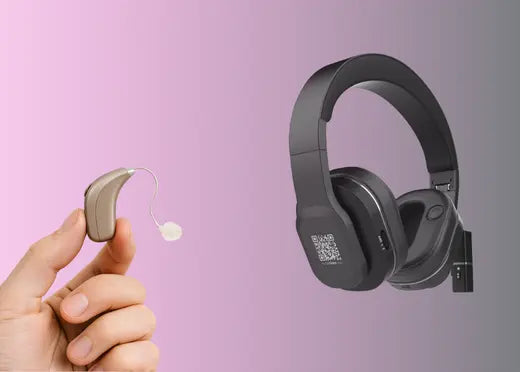Earwax Blockage: Causes, Effects on Hearing, and Suitable Solutions Like Spokeo
It's natural, it protects our ears, and yet it's often talked about... Earwax , this small yellow-brown substance produced in our ear canal, plays an essential role. But when it accumulates in excess, it can become a real obstacle to good hearing , and become a factor of isolation for many people - especially seniors and those who wear traditional hearing aids.
Decreased speech intelligibility, a feeling of blocked ears, discomfort, or even pain: earwax buildup is the cause of many problems that are often underestimated. And in some cases, it makes traditional hearing aids less effective.
Should we resign ourselves to hearing loss or constantly cleaning our ears? Not necessarily. Some technologies, such as bi-conductive sound , used by Spokeo , allow voice transmission even if the ear canal is partially blocked.
In this article, discover what earwax is, why it can be a problem, who is affected, and above all, what solutions exist today to improve hearing comfort on a daily basis.
What is earwax?
Earwax: a natural protective mechanism
Earwax is a natural secretion produced by the glands in the ear canal. It forms a barrier against external aggressions such as dust, bacteria, and moisture, while preventing the skin from drying out. Its sticky texture allows it to trap impurities, which are then naturally evacuated through jaw movements.
When the mechanism goes wrong
But sometimes this natural process can get disrupted. Frequent use of cotton swabs, a narrow or angled ear canal, or even regular use of headphones or hearing aids can all contribute to the buildup of earwax. This builds up and forms a blockage, impairing hearing and sometimes causing pain or dizziness.
Why do some produce more?
Individual and physiological causes
Earwax production varies from person to person. It can be influenced by genetic factors, the shape of the ear canal (narrow, angled, or hairy), or even age, which makes earwax drier and harder to remove. Skin conditions such as eczema or psoriasis can also change its texture. Finally, daily use of in-ear hearing aids can disrupt the natural evacuation of earwax.
Populations at risk
Seniors , whose natural earwax removal is less effective, are particularly at risk. Children , who have narrower ear canals, and people who wear hearing aids , who often experience a blockage, are also at risk. Not to mention people with reduced mobility , who sometimes have difficulty cleaning regularly, or workers exposed to dusty environments , such as construction workers or farmers.
What are the effects of a traffic jam?
Temporary but disturbing hearing loss
Earwax buildup can cause a blocked ear, a sudden loss of hearing—sometimes on one side—or a change in the way sounds are heard, making voices muffled or less understandable. Although this loss is temporary, it can have a significant impact on social life and well-being, particularly for older people or those with hearing loss.
When earwax is more than just a problem for hearing
The consequences don't stop there. The pressure exerted on the eardrum can cause pain, tinnitus (ringing or whistling), and even dizziness. These symptoms impair concentration, disrupt balance, and can lead to fatigue or irritability in everyday life.
Why hearing aids are sometimes ineffective
Earplugs: The Silent Enemy of Conventional Hearing Aids
When the ear canal becomes blocked, traditional hearing aids become much less effective. Earwax can block the earpieces, distort the sounds perceived, cause repeated failures, or require constant adjustments. Eventually, this accumulation of constraints sometimes pushes some users to abandon their device altogether.
Explore other approaches to hearing better despite a blockage
Bi-conduction: bypassing the physical obstacle
Some newer technologies can circumvent this type of discomfort through a combined approach: air conduction , which passes through the ear, and bone conduction , which transmits sound via the bones of the skull. Even if the ear canal is partially blocked, the speaker's voice remains intelligible.
This is particularly the case with Spokeo , which is based on this principle. This double transmission allows you to better perceive voices without suffering the resonance effect typical of a blocked ear.
A gentler, non-intrusive approach
Another advantage of this type of device: it doesn't have to be inserted into the ear. This reduces the risk of worsening a blockage or causing discomfort. This ease of use is particularly appreciated by the elderly or those with sensitive ear canals.
Conclusion: earwax plugs and hearing, a reality that should not be underestimated
Earwax plays a protective role, but when it becomes excessive, it can impair hearing, comfort, and social interaction. For some people, particularly hearing aid wearers, the consequences can be significant.
Innovative solutions like Spokeo , based on bi-conduction , now make it possible to offer an effective alternative, even in the presence of traffic jams.













